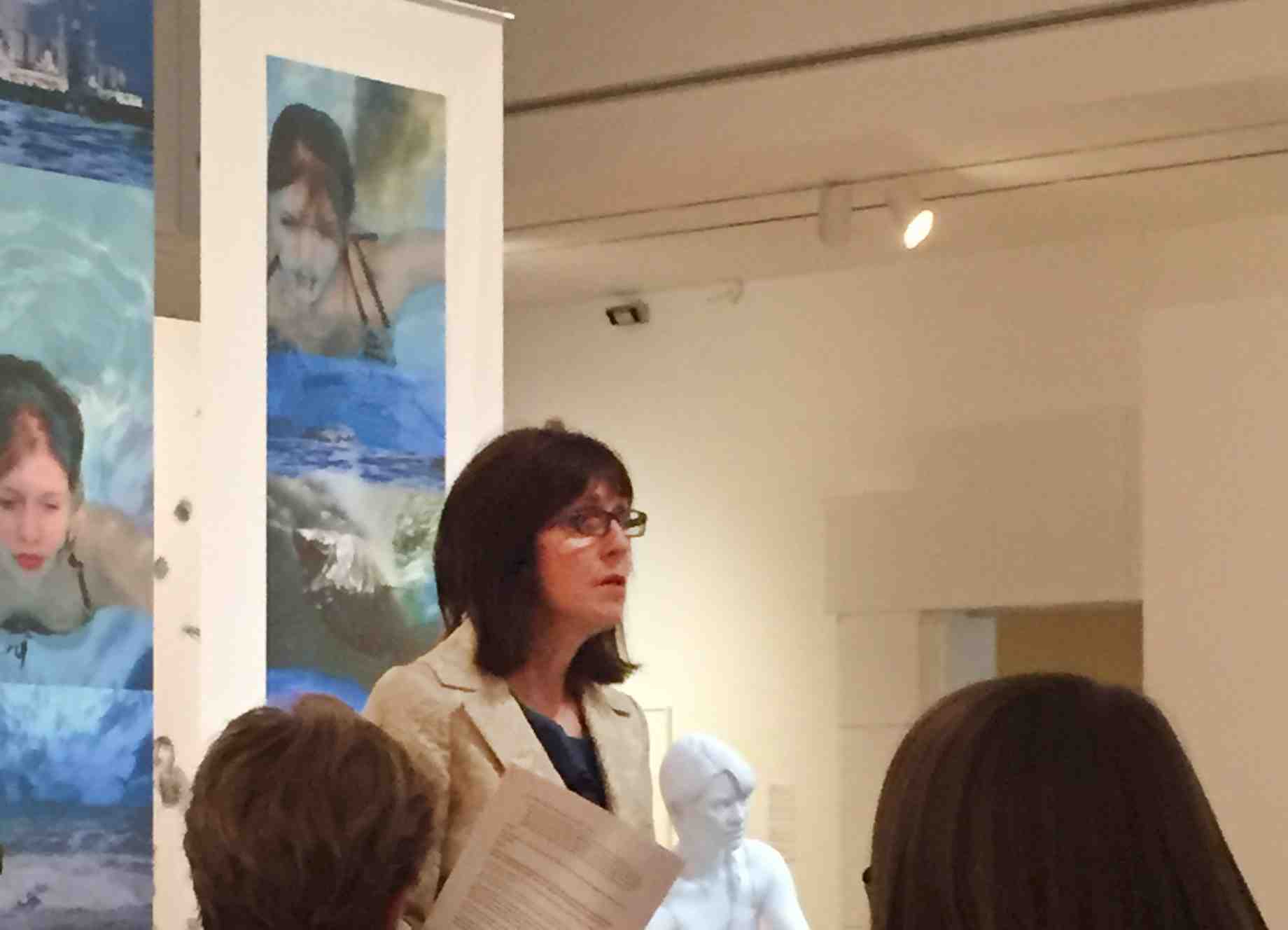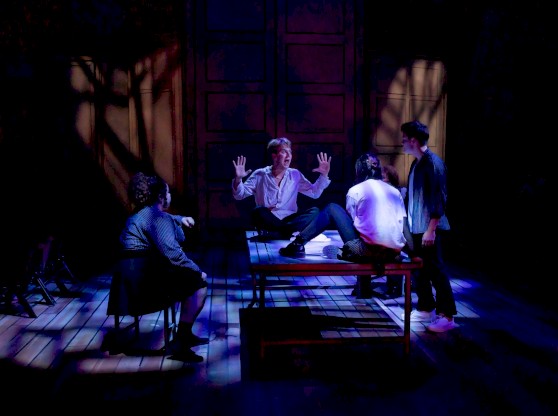On Sunday, Oct. 19. 2014, Professor of Ceramics Nan Smith gave a presentation about her work featured in Solo/Together: 50th Annual UF Art Faculty Exhibition at the Harn Museum of Art. Smith spoke about how her work addresses environmental conservation, specifically industrialized farming, the Gulf Oil Spill and, with her current project titled Mercury, issues of coal producing power plants and mercury bio-magnification. The large, impressive installation, which Smith built herself, sits in the middle of the gallery space in the museum, commanding the viewer's attention.
Smith began her talk by explaining that her sculptures are social narratives that address her concerns of social aspects of the world that she finds problematic, specifically over the past 10 years with environmental impacts to our land and waterways. Asking the audience, “Why art for this purpose?” Smith says, “Artists have historically reflected the time and world in which they lived. I believe visual art is memorable, and it can cause questions and draw awareness to complex issues.”
Smith continued by explaining that her studio art requires research and development of imagery as well as finding new techniques to make the ideas she envisions. Her research for sculpture involves reading, interviews with scientists and medical professionals, site visits, and reviews of scientific research reports, data, governmental websites and news articles. She also studies dreams and spirituality. For her research, Smith utilized resources during her artist residency in Israel and here at the university. She noted that her art relies on the use of symbol and metaphor and that research practice has always been a part of her work as an artist.
To learn more about Smith's work, visit her website. The Solo/Together: 50th Annual UF Art Faculty Exhibition is on view at the Harn until Jan. 4, 2015. For information on future gallery talks by School of Art + Art History faculty members, click here.




